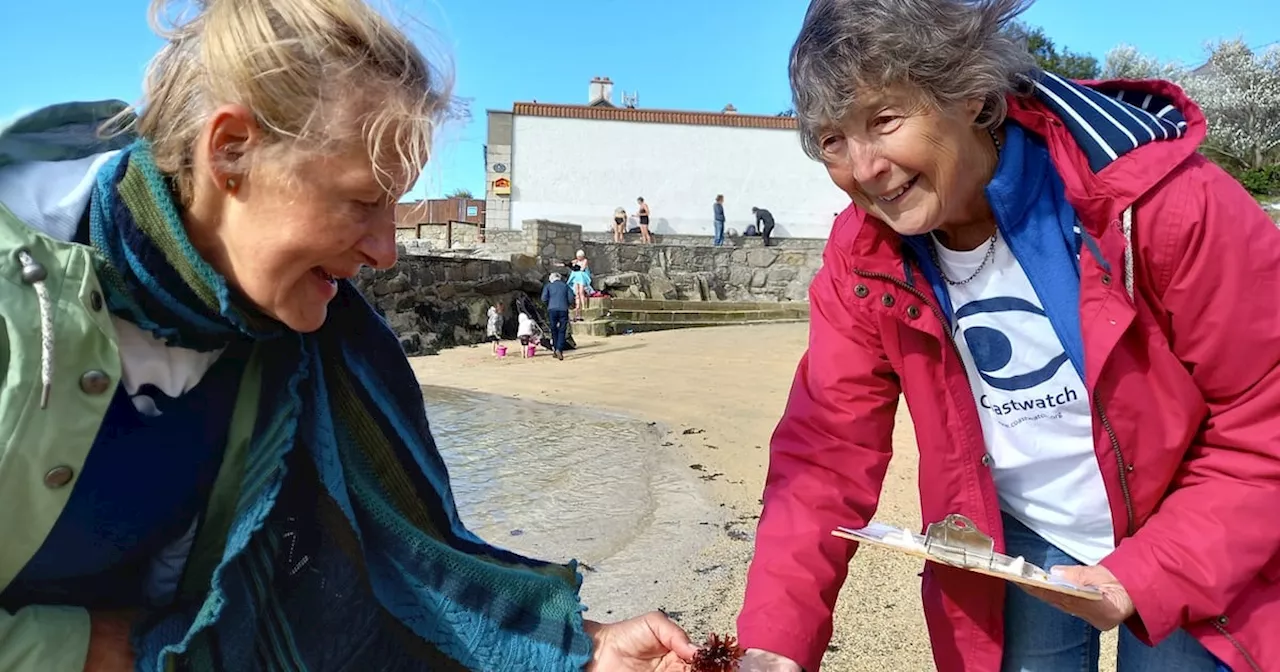A new survey by the environmental group Coastwatch reveals a significant decline in nitrate levels in Irish rivers and streams flowing into coastal areas. This is the first time such a decline has been observed since 2012, attributed to reduced fertilizer use by farmers and fewer sewage discharges. The findings are a positive step for Irish farmers seeking to retain their nitrates derogation, which allows for increased fertilizer application.
Nitrate levels in rivers and streams flowing into coastal areas surveyed by the environmental group Coastwatch have shown a decline for the first time since 2012. The finding follows surveys of hundreds of stretches of the Irish coastline last autumn, which Coastwatch attributes to less use of chemical fertilisers by farmers and reduced sewage discharges – though weather may also have played a part.
Through a large number of citizen scientists who carry out the annual survey, water samples were taken from streams flowing into coastal areas and tested. The number of samples in compliance with the EU Nitrates Directive may prove to be a significant boost for efforts by Irish farmers to retain Ireland’s nitrates derogation, which allows many of them apply more fertiliser and slurry to land, after 2025. The Coastwatch findings follow confirmation by the Environmental Protection Agency (EPA) in December that nitrogen concentrations in Irish waters – based on data from 20 representative rivers – declined in the first half of 2024. “One swallow doesn’t make summer, but the EPA’s big river observations for the first half of 2024, were also significantly lower,” said Coastwatch co-ordinator Karin Dubsky. Over half of the 298 small streams, drains and piped inflows tested by Coastwatch around Ireland had nitrate concentrations “below detection”, only eight were reported in breach of the directive and Irish water regulations. While the wet summer and dry autumn weather may have contributed to improvements, Coastwatch volunteers and scientists note in a report published on Tuesday “a reduction in fertiliser use, new sewage treatment plants coming on stream and better agricultural land management in specific areas”. When it came to water quality indicators recorded by sight or smell, the picture was mixed, Ms Dubsky said. There was a reduction in raw sewage reported but also less animal life including live fish. “The chronic pollution indicator – filamentous brown algae and/or sewage fungus – topped the list of bad signs and was reported from 55 (13 per cent) of inflows,” she said. While tempted to show the worst locations on interactive maps, Coastwatch decided to revisit sites as part of follow-up verification work this year – and only then publish places with chronic pollution, she said. Follow-up work based on survey results includes reporting issues and joint actions. “But here we have persistent challenges. These range from surveyors being unsure who to report to; concern about sharing their name and lack of feedback on action taken ... Where fast action might have prevented damage to nature and health the frustration is really high,” Ms Dubsky said. “We want to improve existing pollution alert systems and design new ones which really cause transformative change in our system. The EPA app ‘See it? Say it!’ is okay for authorities but enough for citizens to bite their big toe with frustration,” she said. Coastwatch Cork co-ordinator Bernie Connolly added: “We have persistent challenges. Some surveyors contact us and are unsure who to report to, some are concerned about their safety when reporting local pollution. “But the biggest gripe is with lack of knowledge about action and lack of opportunity for citizens to help.” Coastwatch is leading an international EU-funded project More4Nature with citizen participation in an effort to create new “pollution threat to action alert systems” and improve existing ones. The first workshop on this took place at Trinity College Dublin last weekend with State agencies, scientists and citizens examining how best to enhance alert systems and responses
NITRATES WATER QUALITY COATWATCH IRELAND FARMING SEWAGE ENVIRONMENTAL PROTECTION
Ireland Latest News, Ireland Headlines
Similar News:You can also read news stories similar to this one that we have collected from other news sources.
 2024 Northern Ireland property investment market weakest since 2012£22.7m sale of Bloomfield Shopping Centre and Retail Park in Bangor was largest transaction of the year
2024 Northern Ireland property investment market weakest since 2012£22.7m sale of Bloomfield Shopping Centre and Retail Park in Bangor was largest transaction of the year
Read more »
 Here's What Team STELLAR Is Loving This WeekSTELLAR Magazine, Irish Fashion, Irish Women's Magazine, Irish Beauty, shops in Ireland, celebrity news, glossy magazine, Fade Street, make-up tips, Irish style, Vip Magazine Group
Here's What Team STELLAR Is Loving This WeekSTELLAR Magazine, Irish Fashion, Irish Women's Magazine, Irish Beauty, shops in Ireland, celebrity news, glossy magazine, Fade Street, make-up tips, Irish style, Vip Magazine Group
Read more »
 Hundreds take part in Dublin vigil to show support for Palestinian journalistsMembers of Irish press gather for Irish Palestine Solidarity Campaign’s New Year’s Eve vigil
Hundreds take part in Dublin vigil to show support for Palestinian journalistsMembers of Irish press gather for Irish Palestine Solidarity Campaign’s New Year’s Eve vigil
Read more »
 5 Lip Balms To Get You Through The Cold SpellSTELLAR Magazine, Irish Fashion, Irish Women's Magazine, Irish Beauty, shops in Ireland, celebrity news, glossy magazine, Fade Street, make-up tips, Irish style, Vip Magazine Group
5 Lip Balms To Get You Through The Cold SpellSTELLAR Magazine, Irish Fashion, Irish Women's Magazine, Irish Beauty, shops in Ireland, celebrity news, glossy magazine, Fade Street, make-up tips, Irish style, Vip Magazine Group
Read more »
 Here's What Team STELLAR Is Loving This WeekSTELLAR Magazine, Irish Fashion, Irish Women's Magazine, Irish Beauty, shops in Ireland, celebrity news, glossy magazine, Fade Street, make-up tips, Irish style, Vip Magazine Group
Here's What Team STELLAR Is Loving This WeekSTELLAR Magazine, Irish Fashion, Irish Women's Magazine, Irish Beauty, shops in Ireland, celebrity news, glossy magazine, Fade Street, make-up tips, Irish style, Vip Magazine Group
Read more »
 The Medieval Irish Kings and the English Invasion Review: Insightful History from an Irish PerspectiveThis comprehensive review explores Seán Ó Hoireabhárd's groundbreaking work, \u201cThe Medieval Irish Kings and the English Invasion.\u201d The book offers a fresh perspective on the period, centering on the experiences and motivations of the Irish political elite during the English invasion. The review highlights the book's strengths, including its meticulous scholarship, insightful analysis, and focus on post-colonial history. It also acknowledges minor weaknesses, such as the lack of detailed place identifications and the omission of a genealogy for Diarmait Mac Murchada.
The Medieval Irish Kings and the English Invasion Review: Insightful History from an Irish PerspectiveThis comprehensive review explores Seán Ó Hoireabhárd's groundbreaking work, \u201cThe Medieval Irish Kings and the English Invasion.\u201d The book offers a fresh perspective on the period, centering on the experiences and motivations of the Irish political elite during the English invasion. The review highlights the book's strengths, including its meticulous scholarship, insightful analysis, and focus on post-colonial history. It also acknowledges minor weaknesses, such as the lack of detailed place identifications and the omission of a genealogy for Diarmait Mac Murchada.
Read more »
